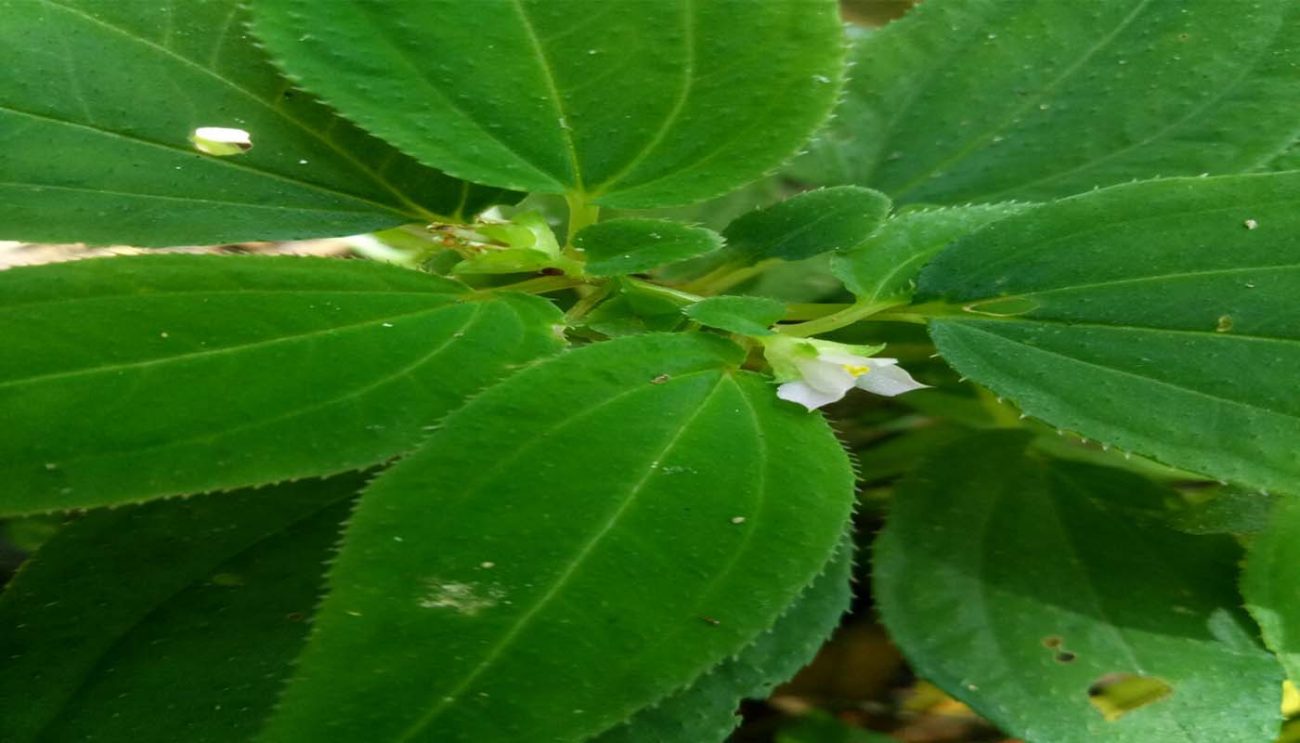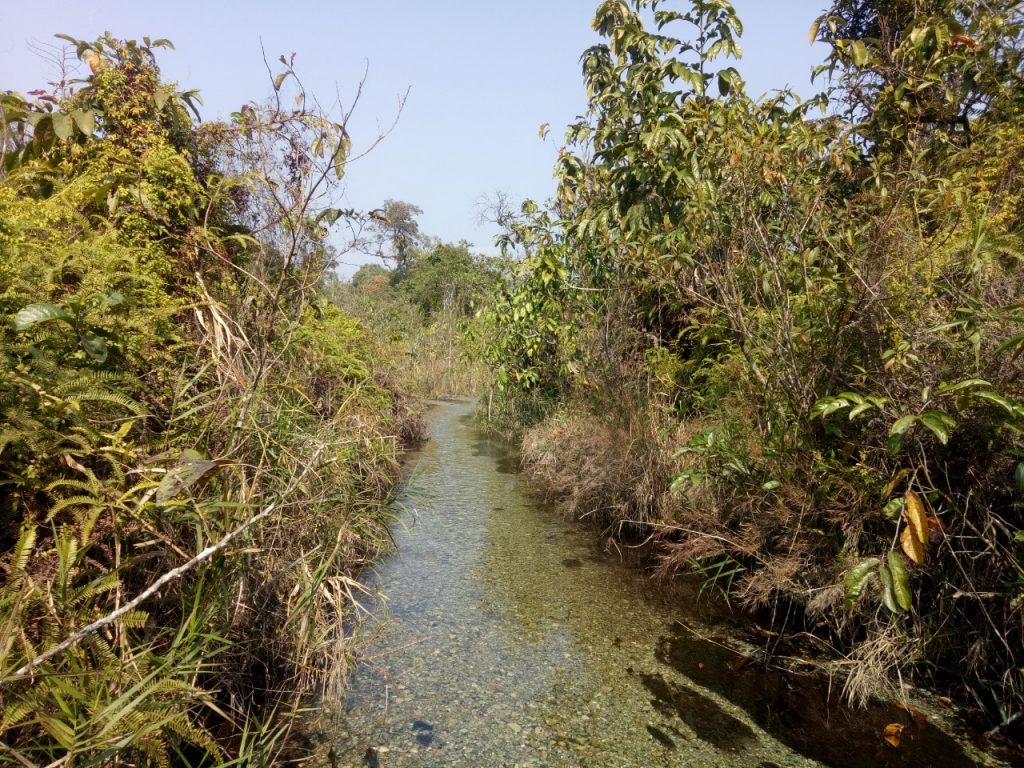Hidden herb rediscovered in the land of the reverse waters
Bodoland University team of researchers rediscover Sarcopyramis Subramanii Nayar at Ultapani forest under Chirang Reserve Forest in Assam

BY ROOPAK GOSWAMI
Guwahati, Feb. 12: A small shade-loving delicate herb that had played hide and seek with researchers for years, was rediscovered by researchers again, 94 years after it was collected only once from Lushai Hills, Mizoram.
The same Bodoland University team of researchers, which had found a shrub after 104 years in Assam, have now found the herb, Sarcopyramis Subramanii Nayar, at Ultapani forest under Chirang Reserve Forest.
The Sarcopyramis Subramanii Nayar is a small and delicate herb, 4 –15 cm tall.

Bodoland University team
Sanswrang Basumatary and Sanjib Baruah found the herb, Sarcopyramis Subramanii Nayar, during a floristic exploration of Ultapani forest in Chirang Reserve Forest, part of the Manas Biosphere Reserve.
The rediscovery has been published in the Checklist Journal.
Sanswrang Basumatary is a research scholar and Dr Sanjib Baruah is an assistant professor of the department of botany, Bodoland University.
Sanswrang Basumatary said, “The type collection of this species is from Tieck, Lushai hills district Mizoram and the collection was made by A.D. Parry in 1926.”
“However, the specimen was wrongly identified as Sarcopyramis nepalensis. After many decades, Indian botanist M.P. Nayer published a new species to plant science as Sarcopyramis subramanii on the basis of Parry’s collection (collection no. 54) in Proceeding of the National Academy of Sciences, Section B Volume 66. It signifies that other than Parry’s collection, in 1926 (specimen deposited at Royal Botanical Garden, London) there were no subsequent collections and nobody spotted this plant,” he added.
The duo had rediscovered a shrub, Trigonostemon semperflorens, from Chakrashila Wildlife Sanctuary in Kokrajhar district after 104 years.
Also read:
.
The researchers said a critical examination of the specimen, study of the literature and consultation of a herbarium specimen in the Royal Botanic Gardens, Kew (K) revealed that it is Sarcopyramis Subramanii. The species is distinguished from the most similar species, S. Nepalensis. It was found on September 9, 2020.
Herb habitat
The populations were found in a moist, shady and streamside habitat of Ultapani forest in Kokrajhar district.
Ultapani is a biodiversity hotspot area situated under Haltugaon forest division of Manas Biosphere reserve.
The forest type of Ultapani is a unique one, comprising mostly semi evergreen and moist deciduous vegetation.
Ultapani (Assamese) literally means “Reverse Water”.
Interestingly, this truly occurs in Ultapani.
Unlike the other river on the north bank of the Brahmaputra, this river flows from west to east.
Destruction of habitat
“During the time of the survey, we have observed a good population. However, we feel human activities such as mass destruction of forest, collection of firewood, cutting down of valuable trees and grazing are the threats to the species. Based on population observed during field surveys and evaluation of available literature, we suggest that the species S. Subramanii can be provisionally assessed as Data Deficient under IUCN category (IUCN 2019,” he said.


